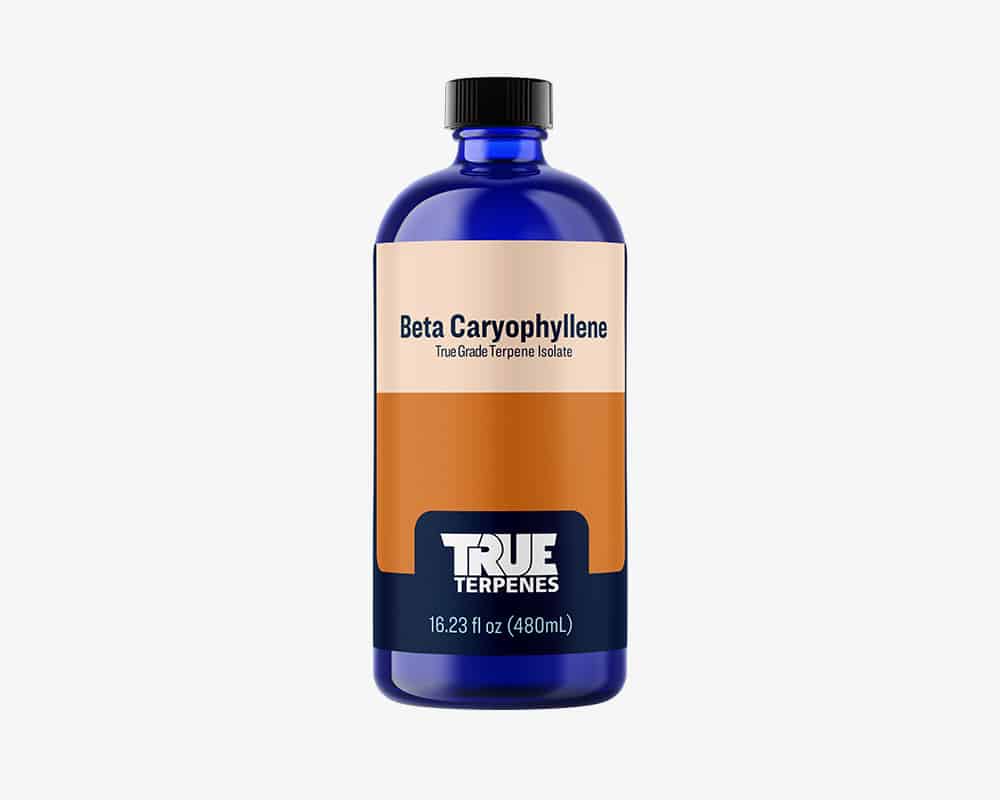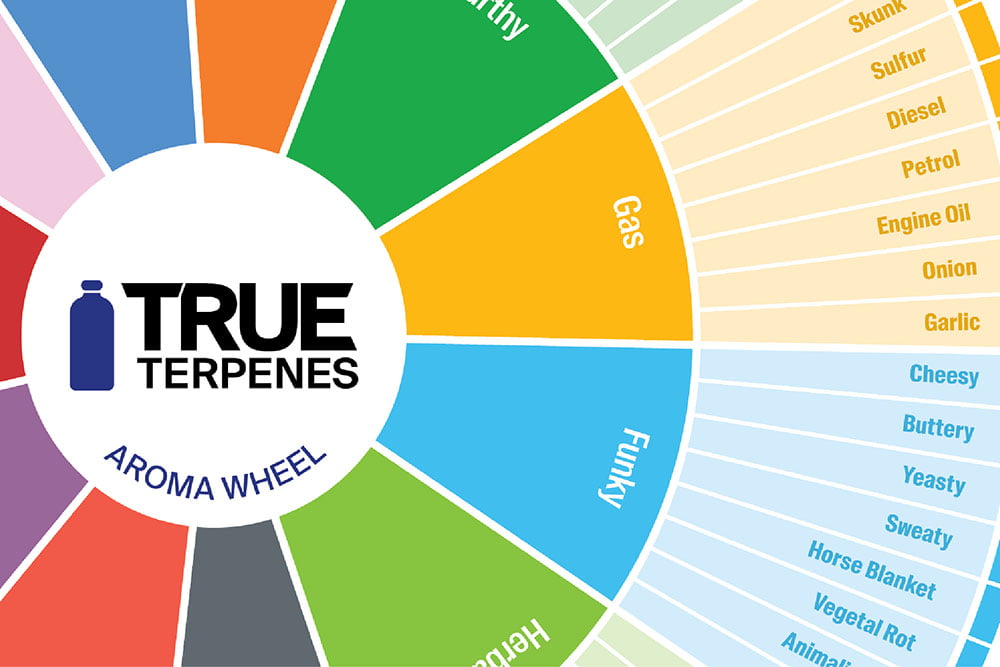June 20, 2023
Beta-Caryophyllene Terpenes

Effects and Benefits of Beta-Caryophyllene
Did you know that fragrant herbs and flowers get their unique aromas from a specific mix of chemical compounds? Terpenes are naturally occurring hydrocarbons found in plants. While there are thousands of different terpenes, one that is often found in cannabis – along with other plants – is called caryophyllene. Learn more about beta-caryophyllene terpene, what makes it unique, and its potential benefits.
What Is Caryophyllene?
Caryophyllene – often referred to as Beta-caryophyllene (BCP) – is a part of a class of terpenes called sesquiterpenes. Present in spices like black pepper and cloves, caryophyllene is also one of the most abundant terpenes in the cannabis plant. Terpenes, like phytocannabinoids, are compounds that naturally develop in cannabis cultivars.
What Are The Effects of Caryophyllene?
We know that caryophyllene affects the endocannabinoid system (ECS), a complex network that helps modulate the body’s central nervous system and maintain homeostasis, a state of physiological and cognitive equilibrium in which all organ systems are functioning correctly.
Caryophyllene is an agonist, meaning it activates receptors in the ECS. These receptors can reduce the immune system’s inflammatory response, so caryophyllene terpene effects could have an important role to play in human health and wellbeing.
What Are the Benefits of Caryophyllene?
Terpene research is a growing field, and much more investigation is needed to fully understand the potential of these compounds. However, initial studies have shown many promising health benefits of caryophyllene:
- Pain management: Caryophyllene appears to have analgesic and anti-inflammatory properties. Thus, it could be useful for treating both acute and chronic pain, offering an alternative to addictive drugs like opioids.
- Anti-aging properties: Because caryophyllene is an antioxidant, it inhibits the production of free radicals. Antioxidants are often used in products designed to minimize signs of aging.
- Antidepressant effects: A Korean study found that caryophyllene reduced stress-related behaviors linked to depression. Since the research was conducted on animals, it is not yet clear if caryophyllene would be an effective antidepressant treatment for humans.
- Antibacterial properties: Caryophyllene kills bacteria, so it may work as an effective antimicrobial agent in health or cleaning products.
- Nervous system support: By helping reduce inflammation and improving the delivery of oxygen to the brain, caryophyllene may help protect the nervous system from damage.
Caryophyllene is present in topical treatments like clove oil, which has a numbing effect – some people use it to treat toothaches. Beta-caryophyllene is approved by United States Food and Drug Administration (FDA) as safe for human consumption. Like other flavorful terpenes, caryophyllene is used as a food additive to enhance the taste of certain products, such as chewing gum.
What Makes Caryophyllene a Unique Terpene?
There are dozens of different terpenes in cannabis – such as myrcene, limonene, and linalool – but caryophyllene is the only one that acts like a cannabinoid. By activating cannabinoid receptors, caryophyllene can increase the production of a brain chemical called anandamide, which is thought to affect mood, stress levels, and pain regulation.
While the field of terpene research is continuously evolving, we know that caryophyllene targets the CB2 receptors in the endocannabinoid system. This offers further evidence that terpenes and cannabinoids (such as THC and CBD) are closely linked. In combination with flavonoids, terpenes and cannabinoids may produce unique effects and benefits, a theory known as the entourage effect.
What Does Caryophyllene Smell Like?
Each terpene evokes different sensory notes and has a unique scent. The aroma of caryophyllene is usually described as peppery, spicy, warm, or woodsy. The smell of freshly ground pepper or cloves is a good example of caryophyllene’s smell. Cannabis cultivars that are high in caryophyllene are often characterized as pungent, with hints of diesel fuel.
What Does Caryophyllene Taste Like?
Foods with beta-caryophyllene tend to have a spicy or earthy flavor. Caryophyllene is present in many of the culinary herbs used to flavor meat and vegetables. Thus, you will find caryophyllene in:
- Basil
- Black caraway
- Black pepper
- Cinnamon
- Cloves
- Hops
- Lavender
- Oregano
- Rosemary
- Ylang-ylang
Copaiba oil, an essential oil derived from the copaiba tree, also contains caryophyllene. This oil is used in aromatherapy and is found in soaps and perfumes.
What Strains Contain Caryophyllene?
A few cannabis strains where caryophyllene is dominant are:
- Bubba Kush: Indica-dominant strain
- Sour Diesel: Sativa-dominant strain
- Chemdawg: Indica-dominant strain
- Girl Scout Cookies (GSC): Indica-dominant strain
Dispensaries will often provide a strain’s terpene profile, along with information like the level of THC and the strain’s typical effects.
Is Caryophyllene in a Sativa or Indica Strain?
Terpenes are present in every kind of cannabis cultivar, regardless of its lineage. Caryophyllene is found in both sativa and indica strains, as well as hybrids.
Caryophyllene vs. Beta-Caryophyllene Terpene
Beta-caryophyllene is usually simply referred to as caryophyllene. You may also see it labeled as β-caryophyllene or BCP.
Beta-caryophyllene is distinct from alpha-caryophyllene – a terpene more commonly known as humulene. Humulene is monocyclic, meaning it has one carbon ring, whereas beta-caryophyllene is a bicyclic terpene.
Caryophyllene FAQs
Learn even more about the science behind terpenes in these FAQs:
How is caryophyllene used?
In addition to its presence in cannabis cultivars, caryophyllene is used as a flavoring agent in packaged foods and beverages. It is also found in cosmetics like perfumes, creams, and other topicals. Caryophyllene is popular in aromatherapy and is present in many essential oil blends.
Where are terpenes like caryophyllene sourced from?
Terpenes are found in countless herbs, flowers, and fruits. There are several ways to extract terpenes from their organic sources. These include using heat and pressure, such as steam distillation, or using solvents, like butane or supercritical CO2 extraction.
Are there other common terpenes found in cannabis?
Yes – each cannabis cultivar has a unique mix of terpenes, known as the terpene profile. Common cannabis terpenes include:
- Humulene: This terpene is most notable in the hop plant, used in the production of dank, funky beers like IPAs.
- Limonene: A terpene that is most often noted in citrus fruits, limonene is also in spearmint.
- Linalool: A soothing terpene, linalool is also prominent in lavender.
- Myrcene: A terpene with musky notes, myrcene is present in mango and lemongrass.
- Pinene: As its name suggests, pinene is found in pine trees.
Each terpene has a unique set of characteristics. In their pure form, terpenes are potent, transparent oils. Terpenes must be diluted before they are consumed or applied to the body.
Choose True Terpenes for Safety and Quality
For a trusted supplier of caryophyllene terpene blends and isolates, look no further than True Terpenes. Headquartered in Oregon, we ship to customers throughout the United States, Canada, Mexico, and beyond. True Terpenes is dedicated to being an industry leader in terpene potency, purity, and safety. Our facility is:
- Audited for good manufacturing practices (GMP)
- ISO-certified (ISO 9001:2015)
- Certified through Foundation Food Safety System Certification (FSSC) 22000
With convenient online ordering, bulk shipping, and wholesale pricing, True Terpenes is here to help you bring flavor and function to your products. Ready to learn more? Call us at 888-954-8550 or contact us today.



